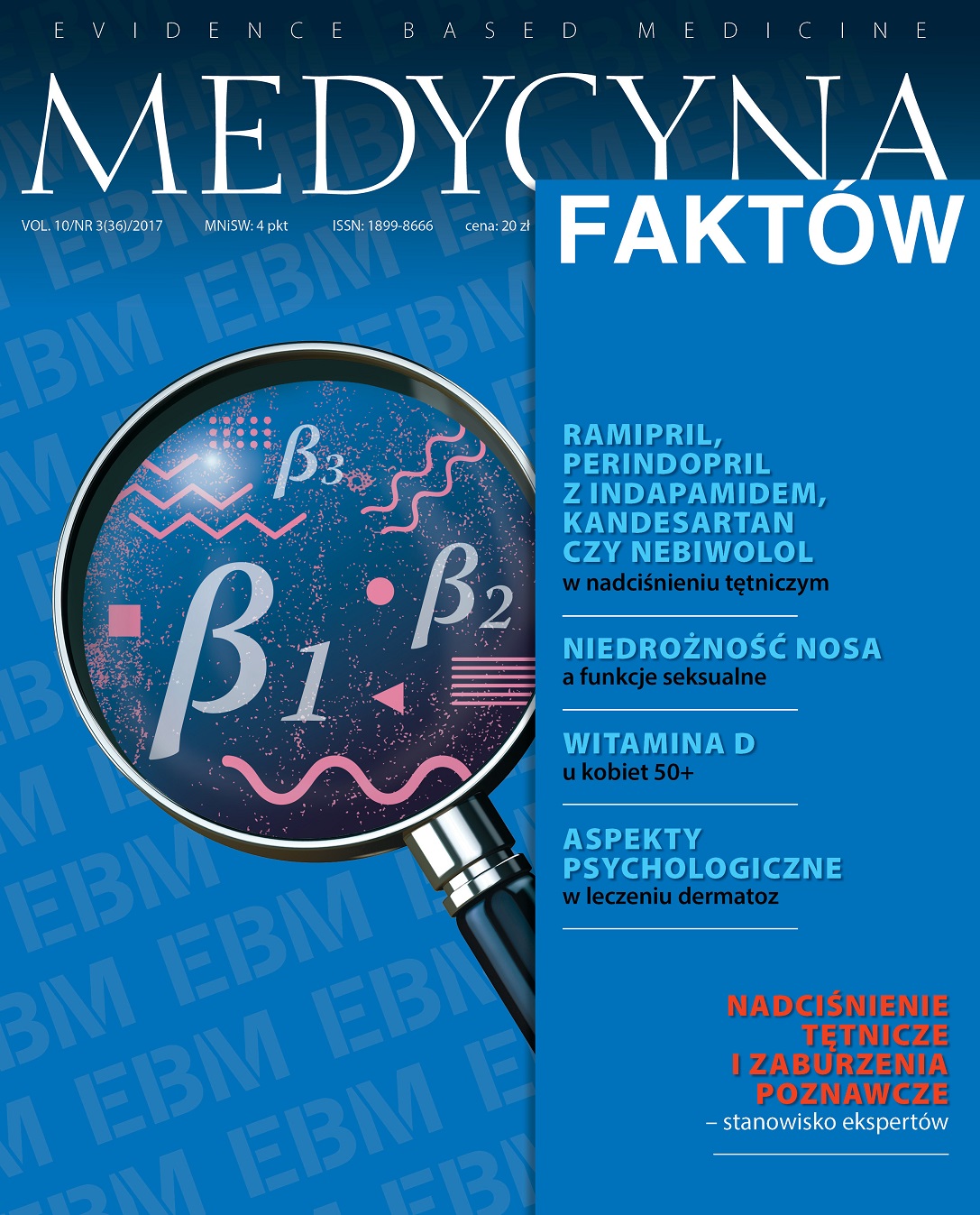Effectiveness and safety of propafenone – experts’ point of view Case report
Main Article Content
Abstract
Propafenone is a class IC antyarrhytmic medication, which slows the influx of sodium current at the beginning of the cardiac muscle action potential. Basic indication for the propafenone are supraventricular tachycardias, including pharmacological cardioversion and the prevention of atrial fibrillation. The most important contraindication is “structural heart disease”, especially heart failure and coronary artery disease. Propafenone is safe and effective medication when contraindication and strict monitoring during the initiation of treatment are obeyed.
Article Details
How to Cite
Wsół, A. B., Sapilak , B. J., & Kuch , M. (2017). Effectiveness and safety of propafenone – experts’ point of view. Medycyna Faktow (J EBM), 10(3(36), 233-236. Retrieved from https://journalsmededu.pl/index.php/jebm/article/view/2130
Issue
Section
Articles
Copyright © by Medical Education. All rights reserved.
References
1. Cardiac Arrhythmia Suppression Trial (CAST) Investigators. Preliminary report: effect of encainide and flecainide on mortality in a randomized trial of arrhythmia suppression after myocardial infarction. N. Engl. J. Med. 1989; 321: 406-412.
2. Femenia F., Palazollo J., Arietta M.: Proarrhythmia induced by propafenone: what is the mechanism. Indian. Pacing Electrophysiol. J. 2010; 10: 278-280.
3. Kirchhof P., Benussi S., Kotecha K. et al.: Wytyczne ESC dotyczące leczenia migotania przedsionków w 2016, opracowane we współpracy z EACTS. Kardiol. Pol. 2016; 74: 1359-1469.
4. Kuck K.H., Cappato R., Siebels J., Rüppel R.: Randomized comparison of antiarrhythmic drug therapy with implantable defibrillators in patients resuscitated from cardiac arrest: the Cardiac Arrest Study Hamburg (CASH). Circulation 2000; 102(7): 748-754.
5. Wiesfeld A.C., Ansink J.M., van Veldhuisen D.J. et al.: Broad complex tachycardia during treatment of atrial fibrillation with a 1c antiarrhythmic drug: ventricular or supraventricular proarrhythmia? Int. J. Cardiol. 2006; 107: 140-141.
2. Femenia F., Palazollo J., Arietta M.: Proarrhythmia induced by propafenone: what is the mechanism. Indian. Pacing Electrophysiol. J. 2010; 10: 278-280.
3. Kirchhof P., Benussi S., Kotecha K. et al.: Wytyczne ESC dotyczące leczenia migotania przedsionków w 2016, opracowane we współpracy z EACTS. Kardiol. Pol. 2016; 74: 1359-1469.
4. Kuck K.H., Cappato R., Siebels J., Rüppel R.: Randomized comparison of antiarrhythmic drug therapy with implantable defibrillators in patients resuscitated from cardiac arrest: the Cardiac Arrest Study Hamburg (CASH). Circulation 2000; 102(7): 748-754.
5. Wiesfeld A.C., Ansink J.M., van Veldhuisen D.J. et al.: Broad complex tachycardia during treatment of atrial fibrillation with a 1c antiarrhythmic drug: ventricular or supraventricular proarrhythmia? Int. J. Cardiol. 2006; 107: 140-141.

